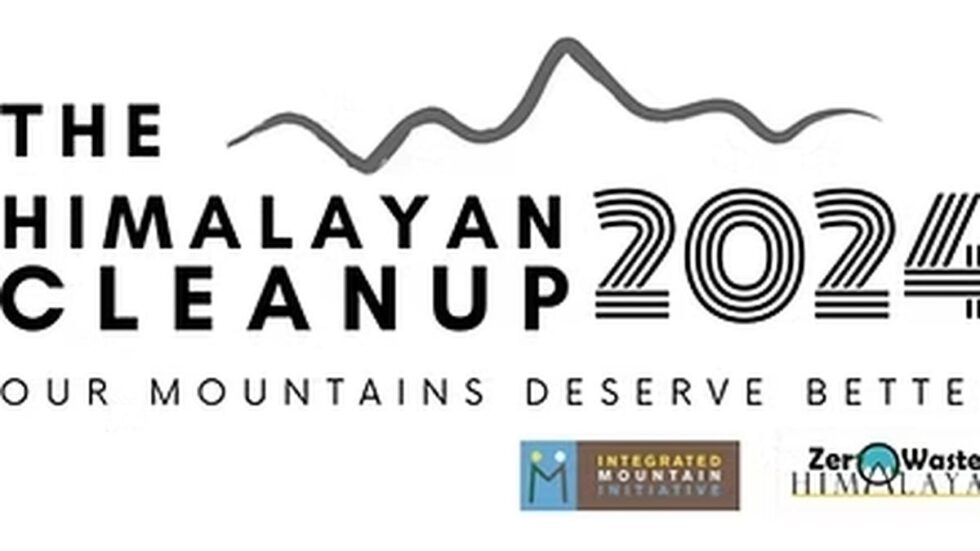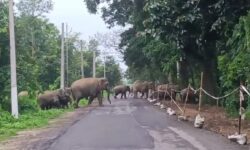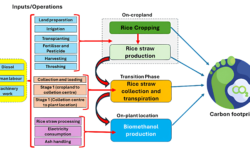
GUWAHATI
Single-use food and beverage packaging forms more than 84% of the plastic waste in the eco-sensitive Himalayan region, an anti-waste collective of NGOs has found.
According to the Zero Waste Himalaya Alliance, about 70% of the plastics collected from across the Himalayan belt from Ladakh to Arunachal Pradesh are non-recyclable and have no market value.
The gravity of the environmental reality came to light at the Zero Waste Himalaya Network Meet held in Himachal Pradesh’s Bir in April, where the constituents of the alliance lamented the failure of the current policies in addressing the unique challenges of mountain ecosystems.
The alliance was initiated by the Zero Waste Himalaya, an organisation based in Sikkim’s Gangtok, and the Integrated Mountain Initiative based in Uttarakhand’s Dehradun.
The two organisations have been spearheading The Himalayan Cleanup (THC), one of the biggest movements against plastic pollution in the Indian Himalayan region, since 2018. The Bir convergence of anti-plastic groups was held a month before their annual plastic waste collection from May 26-30.
The GAIA-Asia Pacific and Break Free supported the meeting From Plastic, two global networks “committed to ending plastic pollution by championing real solutions”.
A statement issued by the alliance on Thursday (May 8, 2025) said, “Over the past six years, the data has indicated that the Himalayan waste crisis is fundamentally a production and systems issue rather than a post-consumer waste management flaw. While the role of individual behavioural change was acknowledged and emphasised, the need for systemic, policy-level interventions and a paradigm shift away from centralised, extractive waste systems was seen as critical.”
The participants identified the critical need for producer responsibility enforcement in mountain regions, calling for a paradigm shift away from centralised and extractive waste systems toward solutions grounded in local realities and traditional wisdom.
Beyond recycling
A report released by THC said the 2018 waste collection exercise was conducted at more than 250 sites by volunteers of 200 organisations. In 2024, more than 15,000 members of 350 organisations collected plastic waste from 450 locations.
Among the nine Himalayan States targeted in 2025, Sikkim generated the most trash items. A total of 53,814 (44% of the total) pieces of litter were audited across 86 sites. This was followed by West Bengal’s Darjeeling with 36,180 items audited across 37 sites.
The volunteers in Ladakh picked up and audited 11,958 pieces of trash across 18 sites. Nagaland and Uttarakhand followed Ladakh to take the fourth and fifth spots.
The exercise across the nine States yielded 1,21,739 pieces of trash, of which 1,06,857 were plastic, mostly single-use, divided into six categories: food packaging, household products, personal care products, smoking material, packing material, and others.
The report said 84.2% of the plastic waste was found to be food and beverage packaging. These packages have been audited to gather data on the top corporate polluters in the Himalayan belt.
“Within food packaging, 71% of the plastic waste was non-recyclable. THC2022 and THC2023 showed 72% and 77.4% of all plastic collected was non-recyclable, mainly, multilayered plastics and tetrapak… These problematic plastics are not collected by any waste pickers and scrap dealers and are found littering mountain landscapes, choking waterways and filling up landfill sites,” it said.
“Thus, there is a need to look at solutions beyond the recycling lens,” it added.
The THC2024 was conducted across villages, schools, tourist spots, and protected areas. Water bodies and rivers were the most littered in the tourist spots.
The report further said that the alliance will call for mountain-sensitive policies, increased resource allocation, and urgent attention to the intersection of waste with climate, food security, and biodiversity in the Himalayan region.
This year, organisations from Bhutan and Nepal have joined the campaign for a cleaner Himalayan region.







